Chapter 4, Part 7
In the 16th century, upon the discovery of direct sea routes from Europe to the Spice Islands, Portugal and Spain asserted their dominance in the world’s spice trade which for centuries were traditionally controlled by the Javanese, Indian, Arab, Persian and Chinese merchants. Clove became one of the spices ferociously fought over by competing European powers in Southeast Asia, and for decades the rivalry between Portugal and Spain was centered around the islands of Ternate and Tidore.
The other spice was nutmeg, originating from the Banda Islands, a small chain of volcanic islands situated amid seas as deep as 7,000 m to the southeast of Ambon. The Portuguese arrived at the Bandas in early 1512 during the expedition from Malacca in search of the sea route to the Spice Islands, and stayed on the islands for about a month.
However hostilities from the local people in Ternate and Ambon kept the Portuguese busy, and they only returned to the Bandas 17 years later, led by Garcia Henriques. Henriques’ plan to build a fort on Banda Neira – the main and most important island of the Bandas – was fiercely opposed by the locals. The increasing resistance from the Bandanese eventually forced the Portuguese to buy nutmeg from traders in Malacca, instead of procuring them all the way from the Banda Islands.
Nutmeg, known to the Europeans as noz-moscada, noix de muscade or noce moscata, was only found in Banda Neira, Banda Besar and several other remote small islands in the Banda Sea. Not only used in various dishes for its earthy, bold, aromatic and nutty flavor, nutmeg was highly valued for its medicinal properties. In the Elizabethan era (mid-16th to early 17th centuries) nutmeg was believed to cure all kinds of sickness, pushing its price more than 300 times the original price.
Roughly the size of a golf ball, a nutmeg fruit contains a dark-colored seed (the nutmeg itself) wrapped in shiny red lace called mace. Both are the most valuable parts of a nutmeg tree, while the fruit is often made into a candied snack by the locals.
The Dutch who were late in joining the spice race by several decades sent an expedition in 1595 to reach the archipelago which now makes up modern Indonesia. A year later the expedition, led by Cornelis de Houtman, reached Sumatra, and Banten on the western part of Java several weeks afterward. De Houtman’s journey continued along the northern coast of Java. By the year 1597 some of the original crew members of de Houtman’s expedition decided to stay in Bali, while the rest returned to the Netherlands with precious spices loaded onto their ships.
Subsequent missions to the East Indies were launched in 1598, and due to the threat posed by England’s East India Company (the EIC – chartered in 1600) as well as to eliminate competition among the Dutch themselves, the Dutch East India Company (the VOC) was established in 1602. In the centuries that followed, both companies were involved in a long competition to dominate the lucrative spice trade in India, Southeast Asia, and the Far East.
In 1607 a 20-year-old merchant by the name of Jan Pieterszoon Coen left the Netherlands for the Banda Islands joining a mission led by Pieter Verhoeff. Two years later, they arrived at Banda Neira and informed the locals about their intention to build a fort on the island. The Bandanese – who for centuries had been trading with merchants from faraway nations in spite of the Bandas’ remoteness – understandably opposed to this plan. Weeks after Verhoeff’s arrival, he and several other Dutchmen were invited by orang kaya – literally ‘rich men’ who were the leaders of the Bandanese – to negotiate the compensation for the construction of the fort. But then they were killed by the locals, while a number of Dutch merchants, including Coen, managed to escape. Two years later, the construction of the fort was continued by Admiral Verhoeven who was soon killed by anxious Bandanese. In the same year, however, the new fort was completed and named Fort Nassau.
J. P. Coen returned to the Netherlands three years later, and in less than ten years’ time he moved up from a lower-ranked merchant to the accountant-general of all VOC offices in the East Indies and eventually the governor-general of VOC in 1617. Exploiting the rivalries among local rulers, Coen’s strategy in controlling the spice trade in the East Indies often involved supporting one side of the belligerents who gave him the most favorable concession. With Coen at the wheel, the VOC secured a nutmeg monopoly in the Banda Islands. However the Bandanese preferred to trade with the EIC for the better prices offered by the English company, and this led to a VOC mission in 1621 to reassert control of the islands by way of killing thousands of local inhabitants in the hands of Japanese mercenaries, sparing only about one thousand souls to be employed as laborers at nutmeg plantations.
Constant threat from the EIC urged the VOC to build a bigger fort on a hill overlooking Fort Nassau. The construction of Fort Belgica commenced in the early 17th century, and in the decades that followed the fort underwent several modifications to strengthen its fortification. The Dutch monopoly over nutmeg trade continued for about two centuries, with occasional skirmishes with the English.
However, despite having Fort Belgica to overlook Banda Neira and its surrounding islands, a British captain by the name of Christopher Cole successfully captured the fort in 1810 without encountering significant resistance from the Dutch. This event was in fact a ripple effect of the war between Great Britain and Napoleonic France, a period in history when the Netherlands was a vassal state of the latter. Four years later following the signing of a treaty between Great Britain and the Netherlands in London, the British returned all colonial possessions of the Dutch acquired during the Napoleonic Wars, excluding some colonies in Africa and South America. Nevertheless, before returning the Bandas to the Dutch, the British took many nutmeg trees with them to be transplanted in their colonies, including Ceylon (modern-day Sri Lanka). This had effectively ended Dutch long monopoly of the nutmeg trade.
Gradually the Banda Islands’ importance diminished for it no longer was the only place where nutmeg trees grew. Its remoteness was exploited by the Dutch rather as a place to impose exile on some of Indonesia’s independence leaders, including Mohammad Hatta and Sutan Syahrir, the country’s first vice president and prime minister respectively. Today Banda Neira is still the most populated of all small islands of the Bandas, home to roughly half of the Banda Islands’ 22,000 residents. People live among historical sites, silent witnesses to the islands’ global importance centuries earlier. During my visit, historical houses, museums and forts were often closed. Finding the caretakers of those places or asking the owner of our hotel to call them were the only ways to visit the colonial heritage buildings.
Banda Neira’s once bustling harbor is now mostly sleepy and quiet, with large overcrowded ferries coming to the island every other week from Ambon. Tourists were quite rare and the locals were never in a hurry. Lunch and dinner took at least half an hour to be served, my mobile phone was out of reach for two weeks, and the island’s small air strip was used by motorbikes more often than airplanes. It was a far cry from how the islands used to be at the height of the spice race.
Click here for the full list of stories from the Spice Odyssey series.
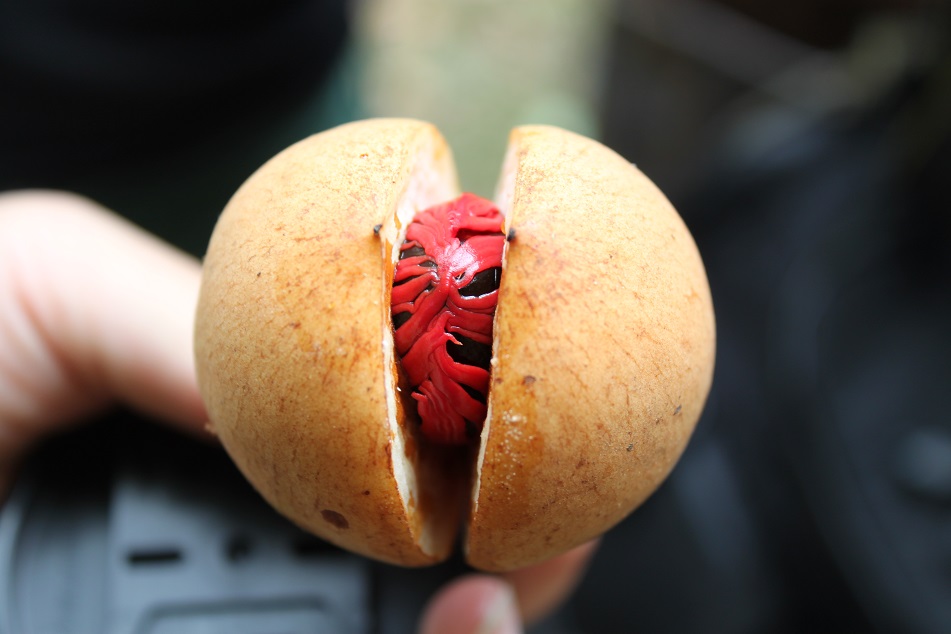
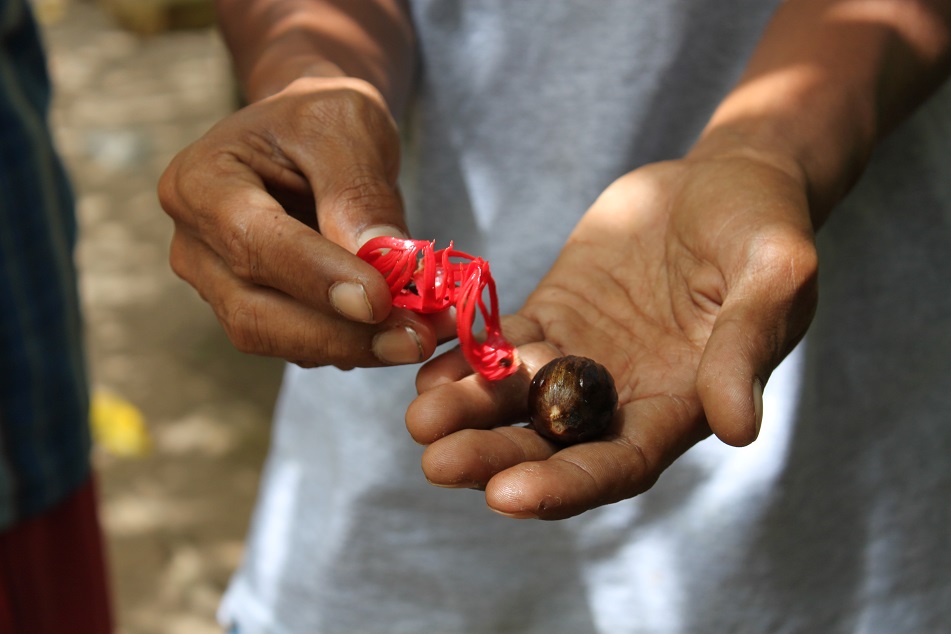
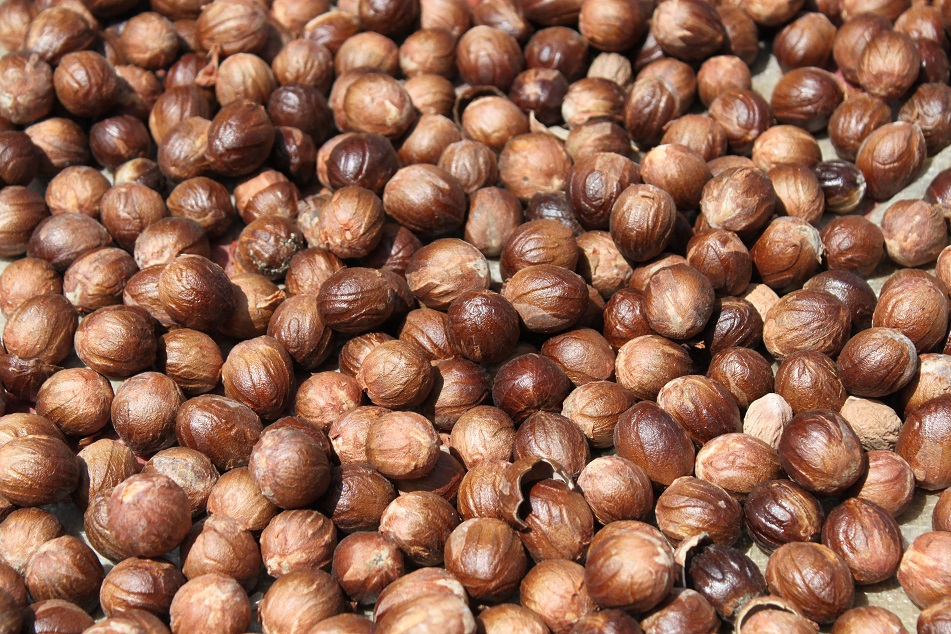
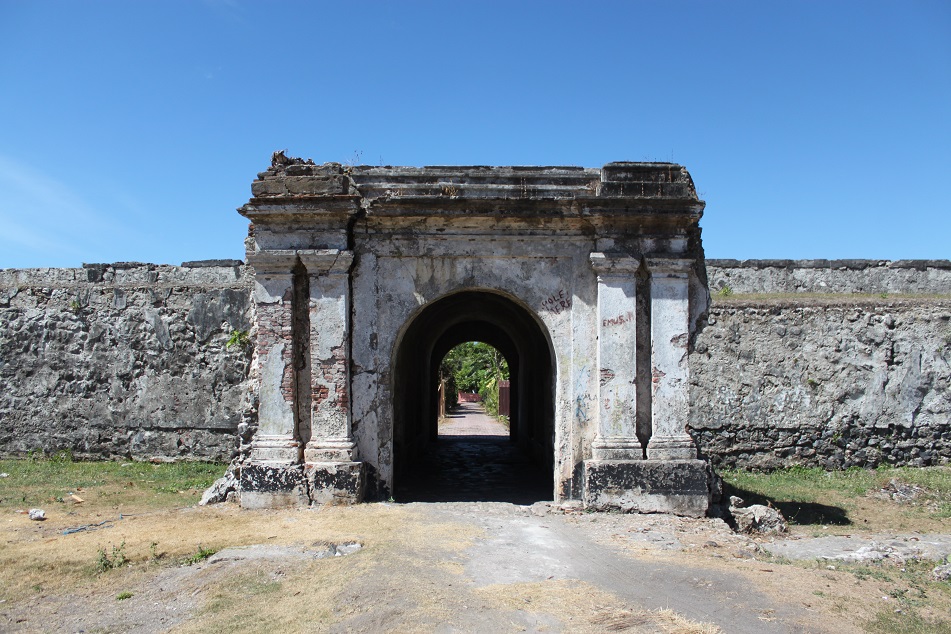

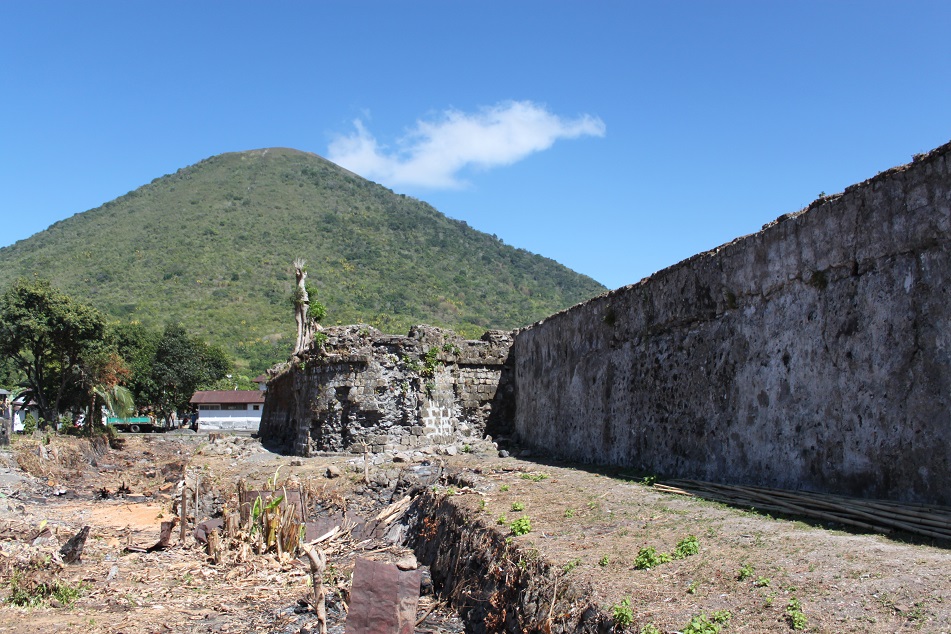
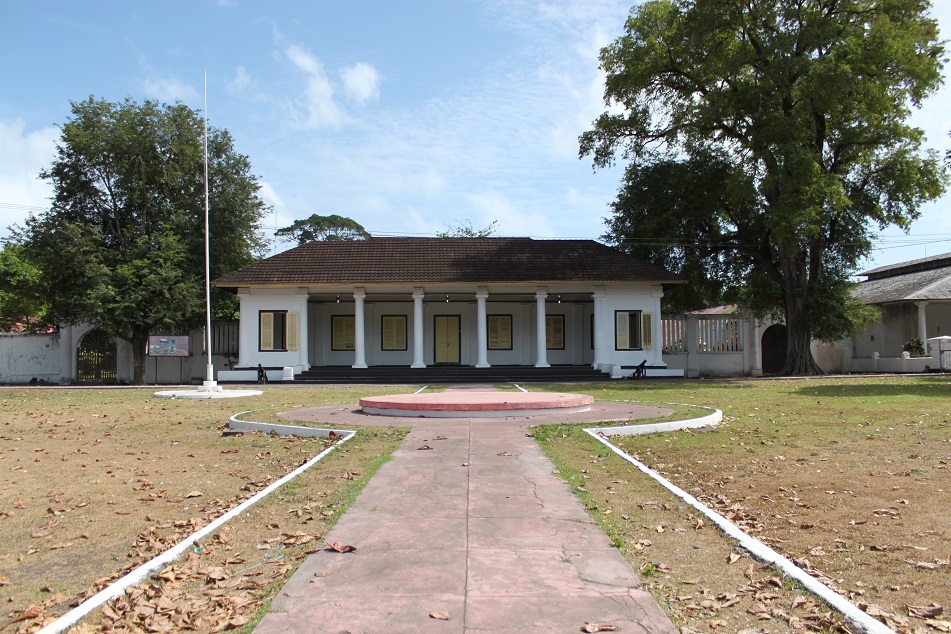


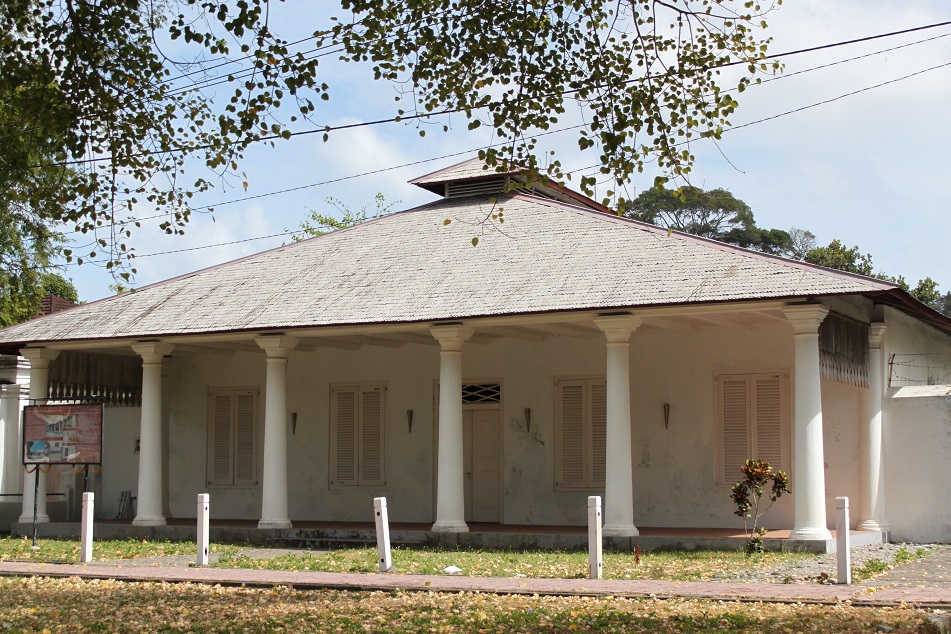
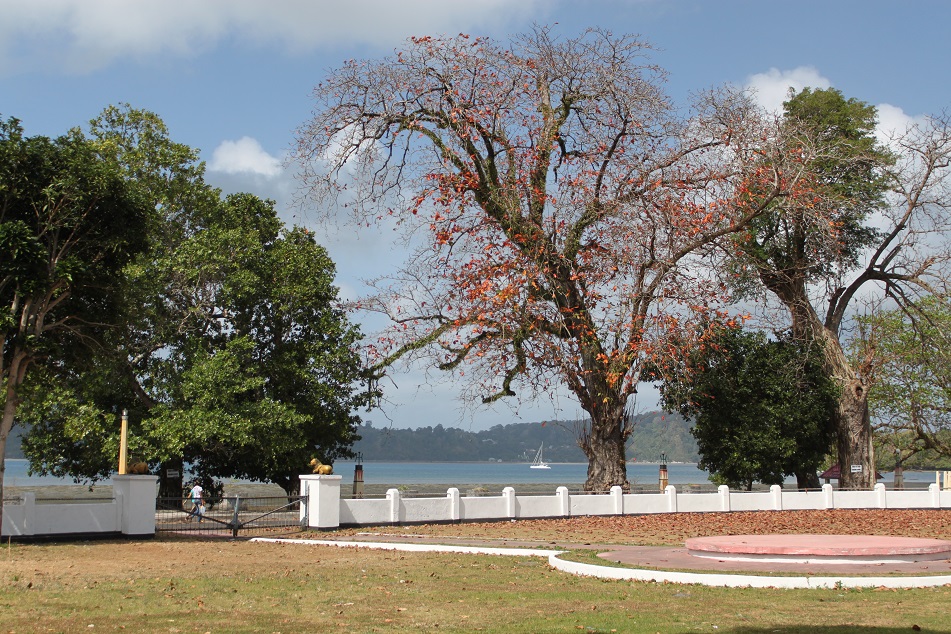
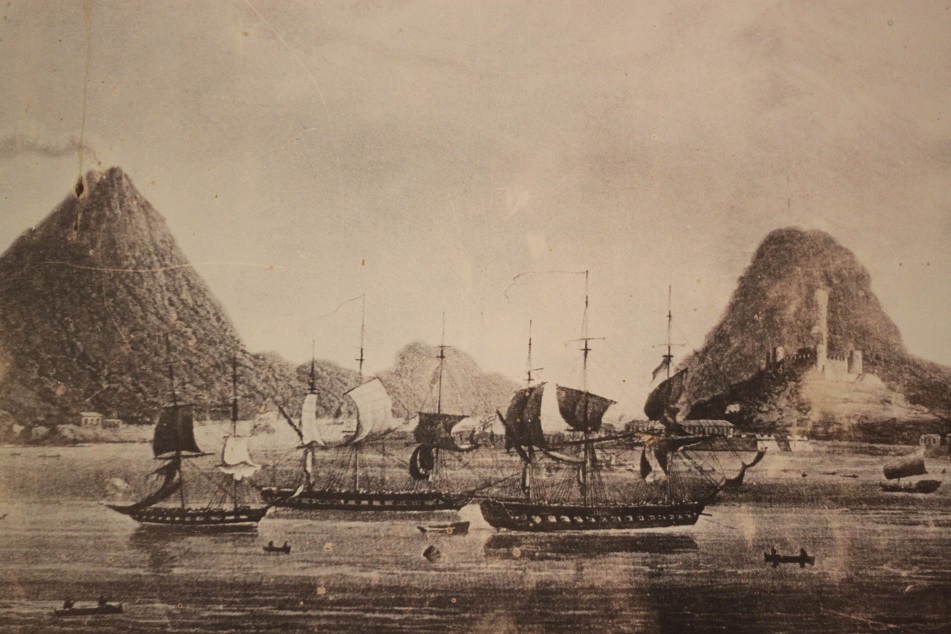

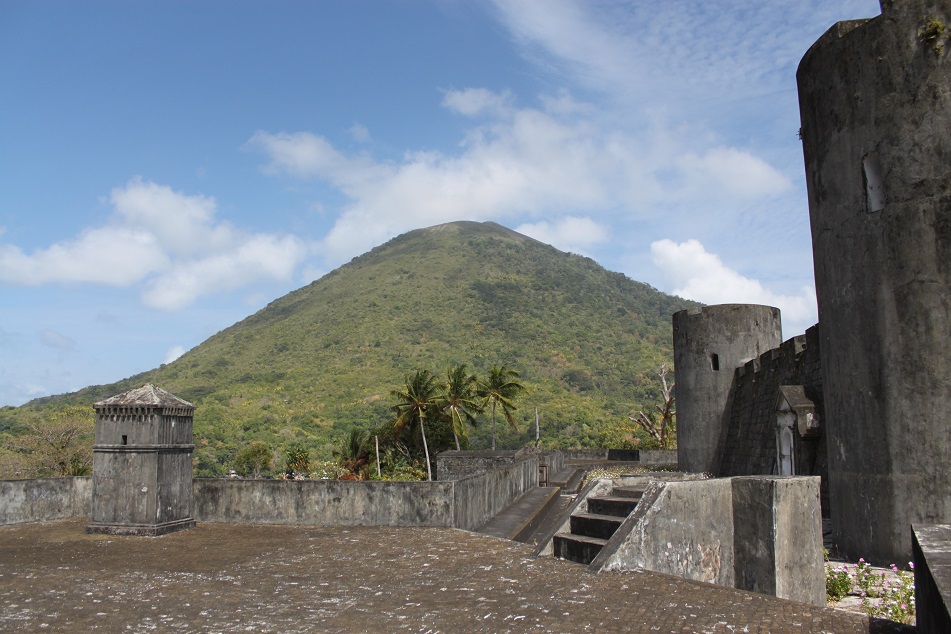
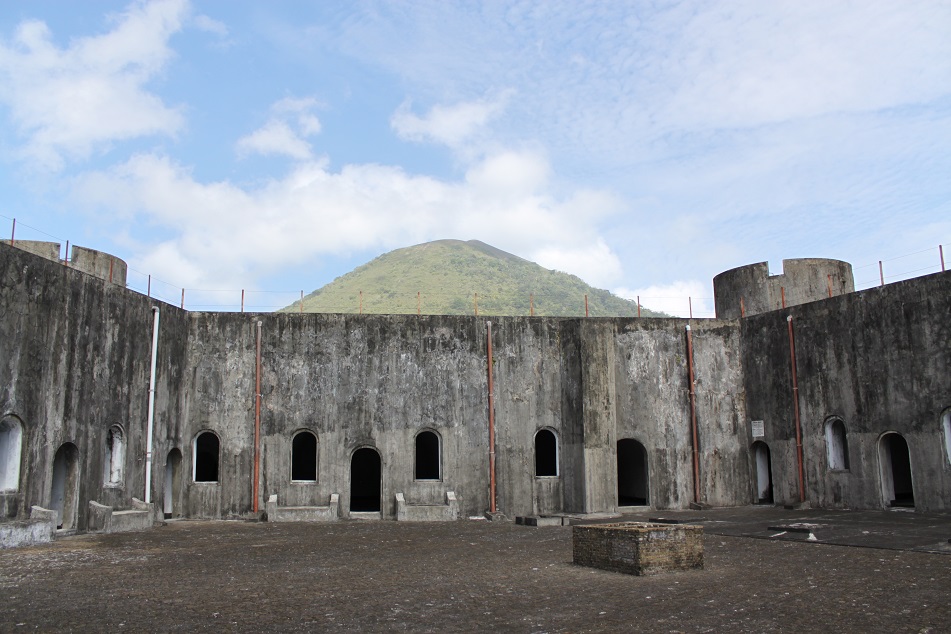
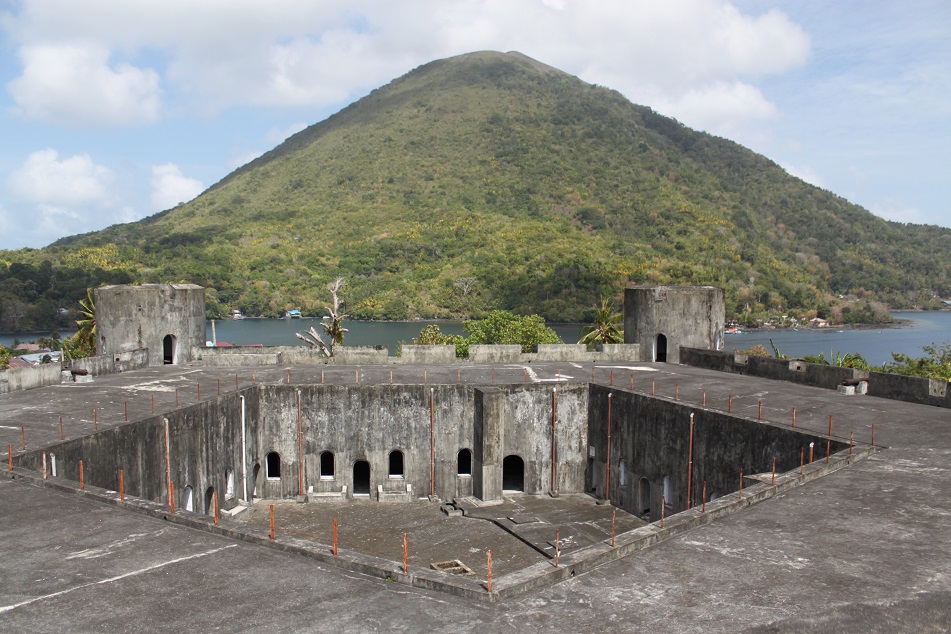
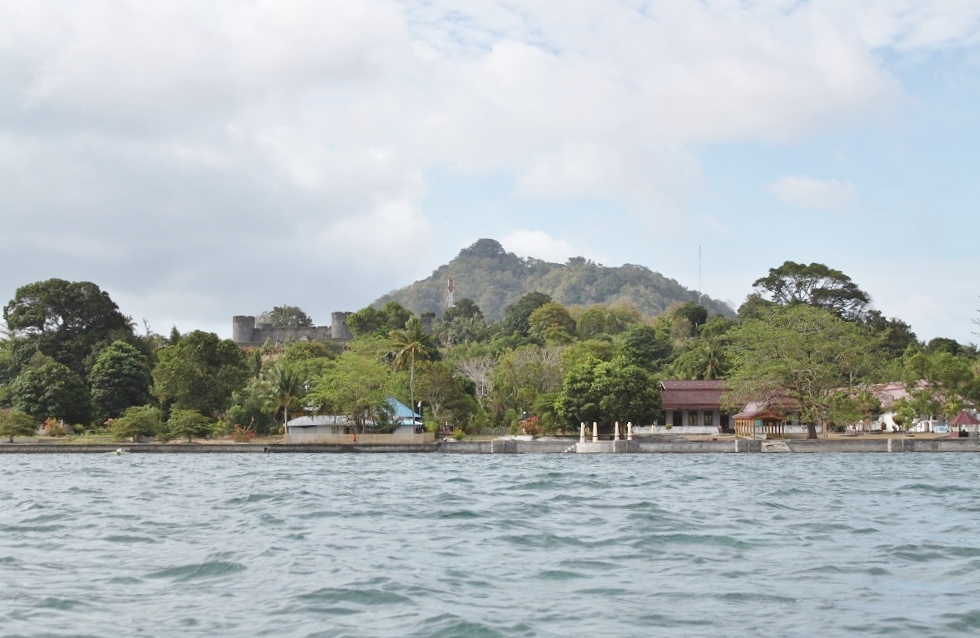
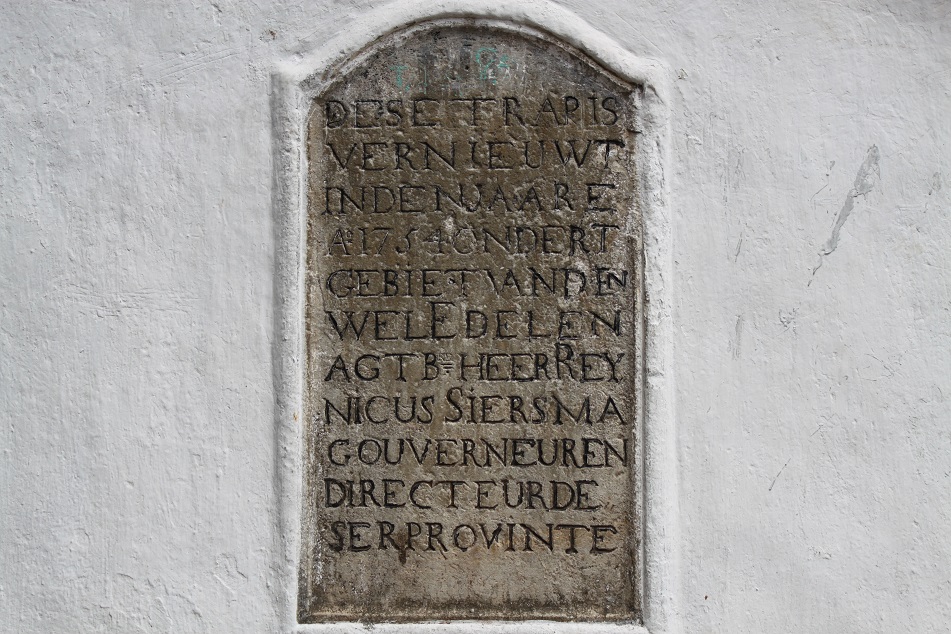
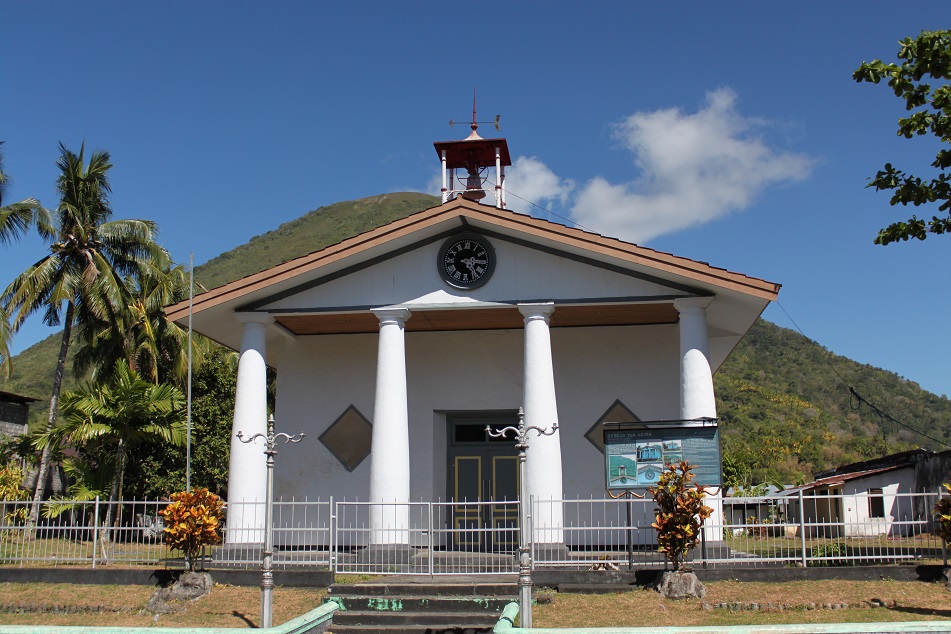

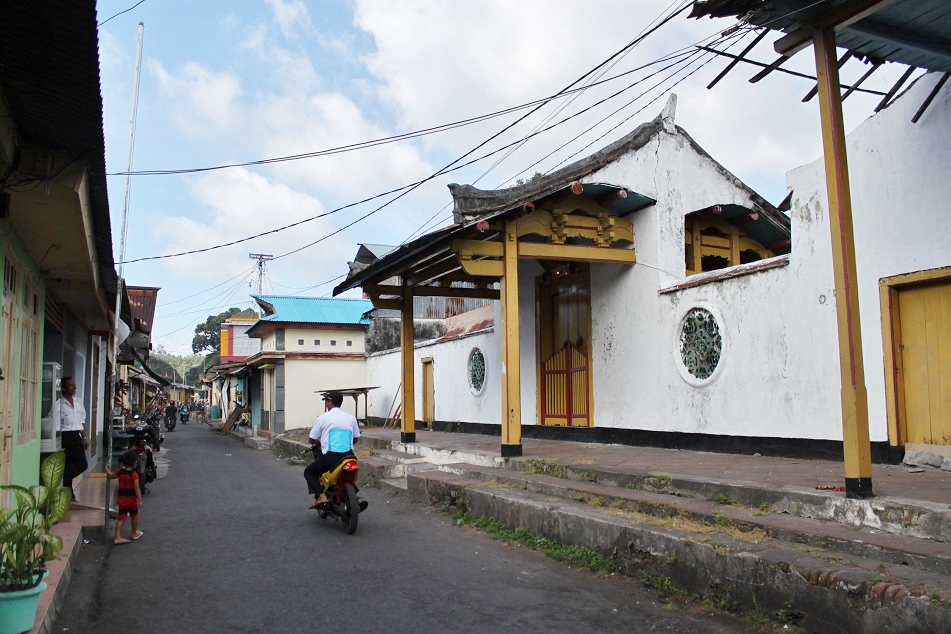

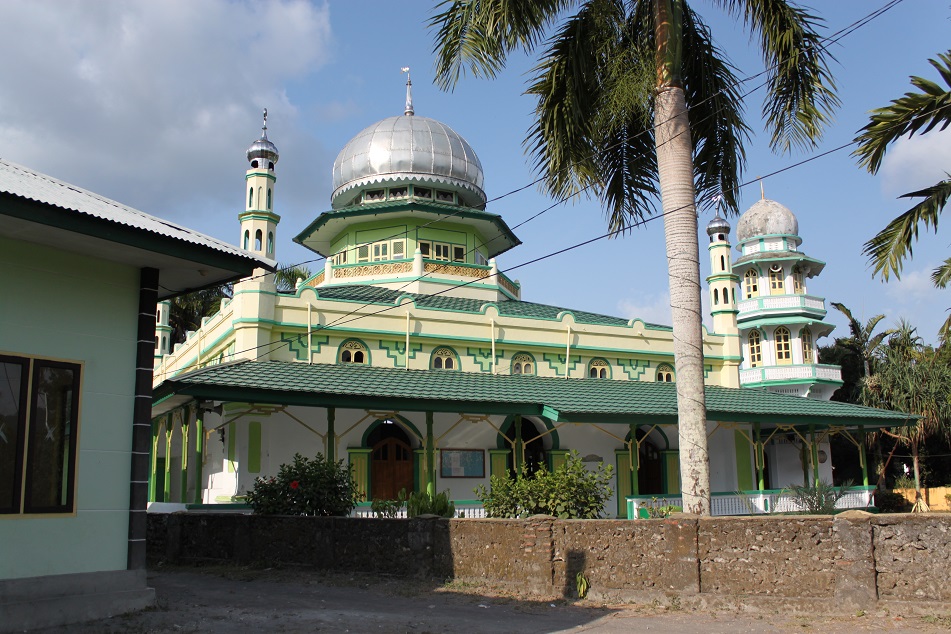
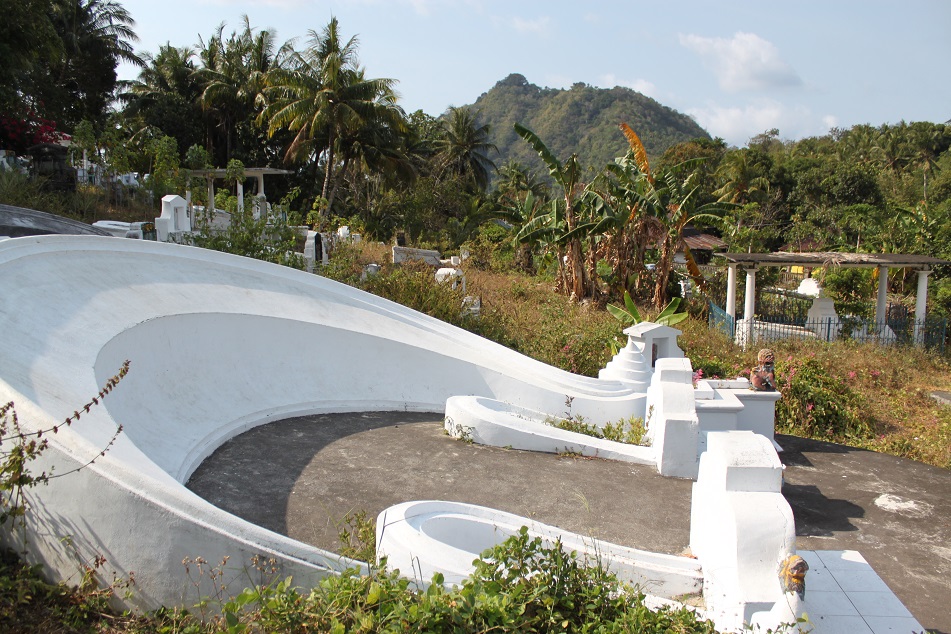
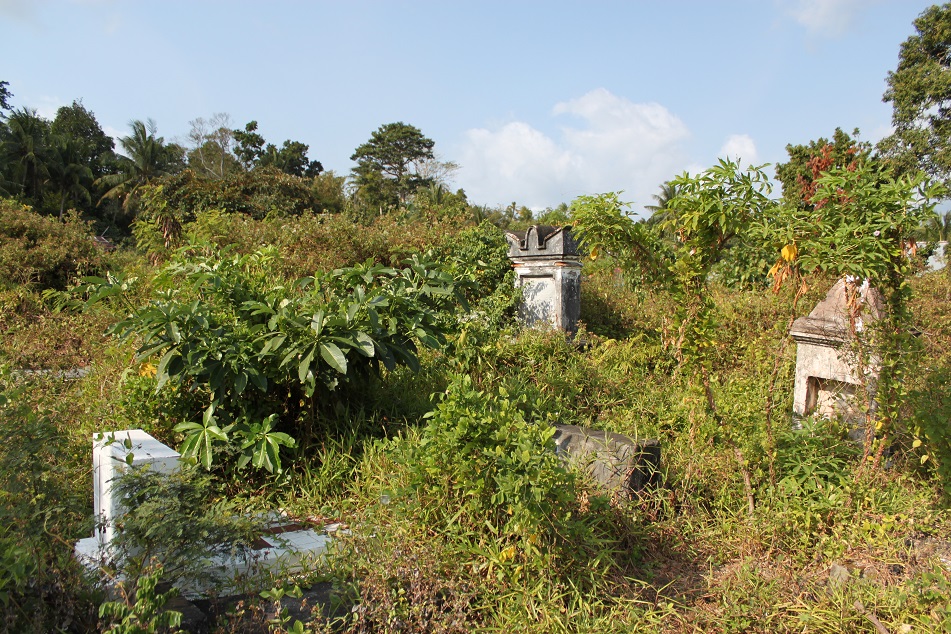
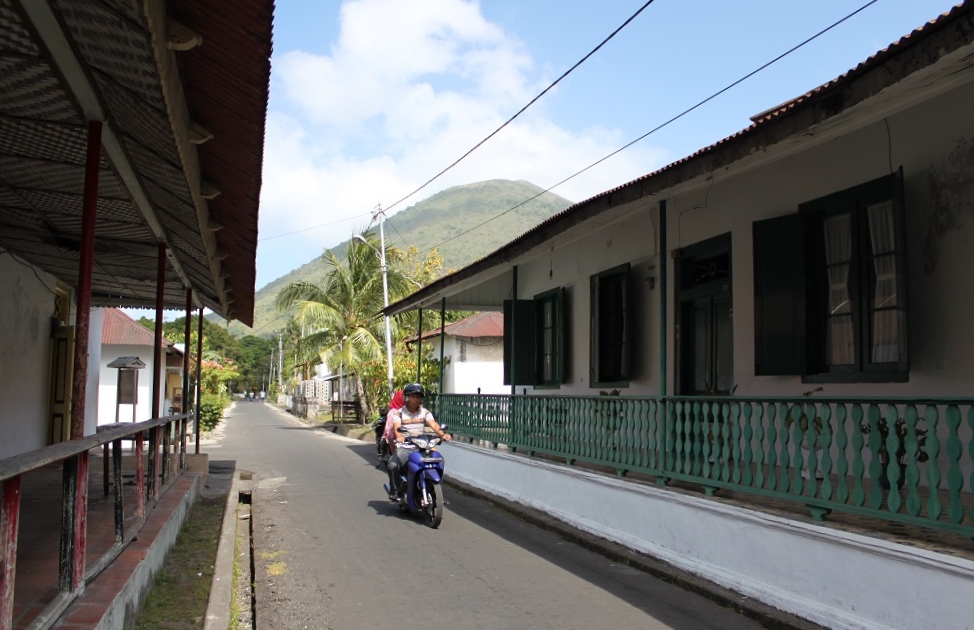
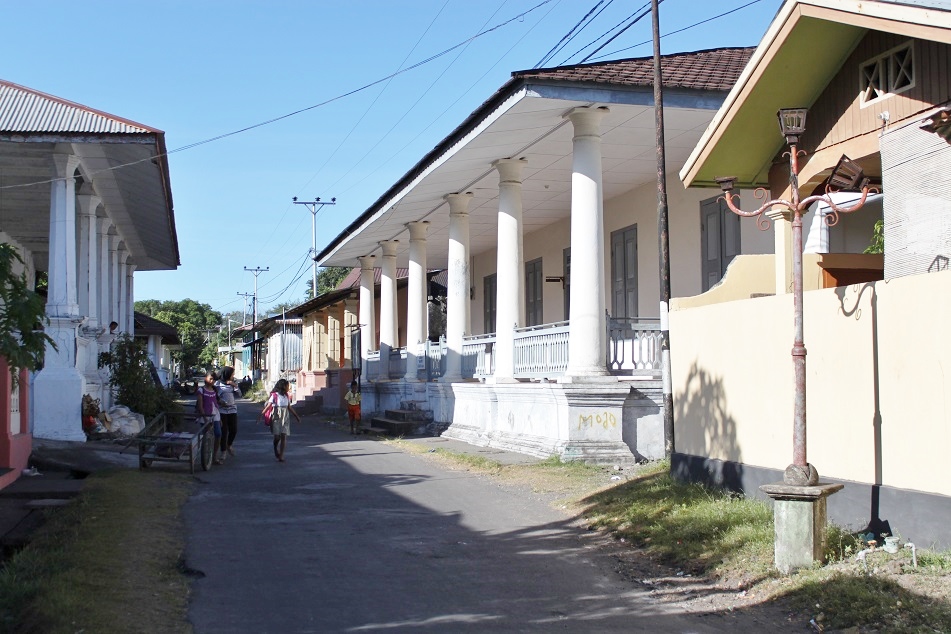
Enaknyaaa baca postingan dari mas Bama ini sambil males2an di balik selimut, keingetan dongeng2 masa kecil tentang betapa indahnya Banda. Dan foto2nya semakin menjelaskan. Tètapi yang pasti sih… Banda itu memang luar biasa cantik ya… Benarkah kapal2 besar itu bisa sampai di pinggir pulau karena salamnya laut?
BTW, engga ada foto kuburan Belanda ya? Biasanya kan suka ada kalo mereka lama di twmpat itu?
LikeLiked by 1 person
Eh maksudnya dalamnya laut ya…. hihihi maafkan karena jempol ndut2… 😀
LikeLike
Ah iya, di luar lagi mendung. Mendukung banget buat males-malesan. 🙂 Banda memang cantik banget, dan buat blog saya sampe nulis empat postingan lho, saking banyaknya yang pengen di-share. Yes, di sisi tertentu dari Banda Neira memang cukup dalam jadi kapal-kapal besar bisa bersandar. Tapi yang bikin saya kagum, bahkan di dermaganya airnya jernih. Ikan berwarna-warni bisa dengan mudah dilihat dari tepi dermaga. Btw, udah saya koreksi ya mbak, itu kuburan Belanda. Saya salah liat pas lagi milih-milih foto. 🙂
LikeLiked by 2 people
I bought my first supply of nutmeg just this week! A very expensive spice here in Hawaii, but made my soup taste wonderful!
LikeLiked by 1 person
Hi Hayley. That’s terrific! Was that the first time you tried nutmeg? My appreciation toward this particular spice grew after my two-week trip to this remote corner of Indonesia.
LikeLiked by 1 person
It was my first time I tried cooking with it! I’m sure I’ve tasted it before in various dishes. I can imagine – I just learned a whole lot about nutmeg! Thanks.
LikeLiked by 1 person
My pleasure. Btw I’m looking forward to your posts on Indonesia!
LikeLiked by 1 person
Wahhh nutmeg-nya so pretty yah! Ada warna merahnya gitu.
Belum pernah lihat freshly picked nutmeg sebelumnya. Eh bener gak sih, nutmeg dipetik atau gimana tuh panennya? Hihihi
LikeLiked by 1 person
Yup, dipetik. Kayak metik buah jambu air gitu. Jadi yang merah-merah itu di Bahasa Indonesia disebut fuli, biasanya dipakai buat bumbu masakan juga sih, tapi seinget saya di masakan Jawa gak terlalu banyak dipakai. Harganya lebih murah dibandingkan biji pala.
LikeLike
What an excellent first photo to lead into the story of nutmeg! Plants never fail to amaze. Seems like the entire history of the world centers around exploitation and control of others.
For the past few months I have not been able to read nor write many blogs, but now I can, and I am going back to read all of yours that I have missed. I have learned so much from your writing and great photos! Thanks.
LikeLiked by 1 person
Thanks Marilyn! A lot of fruits and vegetables we consume today were in fact brought by erstwhile merchants and explorers. Some even have become staple food. Speaking of exploitation, there will always be greedy people who only care about making as much money as they can without caring about others’ suffering. As consumers the least we can do is to be more informed about how things are produced/procured.
No worries, Marilyn. It’s nice to have you back here. 🙂
LikeLike
Didn’t realise nutmeg came from this part of the world; especially after a friend brought me back some of these aroma filled balls from Tanzania.
LikeLiked by 1 person
Thanks to the British now nutmeg is not as highly sought-after as it used to be, and it’s far more affordable today.
LikeLiked by 1 person
Nutmeg was indeed expensive. It used to be represented as a luxurious item in 17th-century Dutch still life, alongside porcelains and silverware! While I investigated the trading route of nutmeg, I did not know the murderous story behind it. I hope I will not think about the dark side of it while adding ground nutmeg to my celery soup.
LikeLiked by 1 person
Exactly! The good thing is now nutmeg trees are grown and cultivated in a more humane way. So you shouldn’t be too worried about its past and rather think of how delicious your soup tastes because of that ground nutmeg. 🙂
LikeLiked by 1 person
Menarik juga ya, ternyata dulu demi menguasai biji pala orang sampai bunuh-bunuhan gitu.
Btw, dengan segala ‘keterisolasian’ nya saat ini, bagaimana kemarin pesan atau cari penginapan di sana Bam? Daily expense di sana murah atau bagaimana? Pengen euy ke Banda, tapi pengen eksplor bawah lautnya selain peninggalan sejarahnya.
LikeLiked by 1 person
Banyak komoditas yang menyebar di seluruh penjuru dunia punya masa lalu yang kelam, Bart. Ya dalam sejarah manusia kan dimana ada uang, di situ ada keserakahan.
Kemarin sih dapet penginapan lewat browsing di internet. Ada satu namanya Mutiara Guesthouse, itu recommended. Kalo daily expense sih lebih mahal dari Jawa. Sebagai gambaran sekali makan pake minum jus itu sekitar 40 ribuan.
Bart, kamu musti kudu harus diving di sana. Snorkeling aja udah bagus banget, apalagi kalo diving.
LikeLiked by 1 person
Iya ya, dan bahan tambang serta mineral yang sampai saat ini masih ‘kelam’ ceritanya.
Aaahhh mau banget ke Bangka, pasti bakal betah. Eh iya Bam musim baiknya bulan apa? Ada ATM gak di sana? Pengen banget diving atau snorkelingan di Bangka.
LikeLiked by 1 person
Duh typo. Pengen diving di Banda maksudku 😁😁😁
LikeLike
Mungkin kamu lagi kepengen martabak Bangka. 😀 Kalo kata penduduk setempat sih musim paling bagus itu antara Oktober sampe Desember karena ombaknya lebih tenang dan gak ada ‘air putih’. Yang dimaksud air putih di sini adalah ubur-ubur kecil yang bisa bikin kulit agak gatal.
Nah soal duit, dulu katanya di Banda gak ada ATM sama sekali. Tapi sekarang untungnya ada ATM BRI. Jadi pake kartu ATM apapun gak masalah, paling kena charge aja per transaksinya.
LikeLiked by 1 person
Hahaha bisa jadi ya, udah lama lho aku gak makan martabak.
Ah kebetulan banget, aku lagi timbang-timbang nyari tempat yang bisa dikunjungi tahun depan pas di bulan-bulan itu.
Siip, berarti bisa bawa uang secukupnya, dan sisanya ambil di ATM aja. Hmm untuk jalurnya, cuma kapal dari Ambon aja ya Bam? Dan seminggu cuma tiga kali?
LikeLiked by 1 person
Ke Banda pilihannya ada 3: kapal Pelni (Tidar dan Kelimutu — aku lebih recommend Tidar karena kapalnya relatif lebih baru) yang jadwal kedatangannya tiap dua minggu sekali, kapal cepat yang berlayar dua kali seminggu, dan pesawat (dulu sih pas aku ke sana Susi Air masih melayani rute Ambon – Banda Neira).
LikeLiked by 1 person
Dicatat. Banyak juga pilihannya. Berarti harus cek jadwalnya dulu ya.
Kemarin dirimu waktu kesana naik apa Bam?
O iya aku jadi ingat, kalau gak salah dirimu juga pernah cerita kalau di sana bangunan bersejarahnya banyak yang ditutup. Harus nunggu/nyari yang jaganya dulu kalau mau berkunjung, seperti ceritamu di atas. Itu termasuk benteng-benteng nya juga kah?
Terus untuk transportasi dalam pulau gimana? Ada sewa motor ndak? hehehehe
LikeLike
Yes, harus cek jadwal sering-sering, terutama beberapa minggu menjelang keberangkatan.
Aku berangkat dari Ambon naik kapal Pelni, tapi pas balik ke Ambon naik kapal cepat.
Bener banget. Contoh untuk Benteng Belgica yang merupakan benteng paling besar dan paling terawat di Banda aja harus nyari juru kuncinya dulu. Waktu itu owner hotelku bantu telfonin orangnya sih. Jadi kita tinggal bilang aja jam berapa mau ke sana. Untuk transportasi di Banda Neira jalan kaki aja Bart. Gak gede kok pulaunya. Aku gak nyari sih waktu itu ada sewa motor atau enggak.
LikeLiked by 1 person
Berarti bisa dikombinasikan dengan mudah ya pulang dan perginya. Hmmm kaya’nya nanti aku bakal nanya nomor kontak hotelmu deh Bam. Hahahaha lucu amat sih kudu ngabarin ke juru kunci benteng segala.
Waah kalau bias jalan kaki sih lebih seru. Lebih enak begitu. Untuk naik gunungnya juga bisa diarrange di sana langsung ya Bam?
LikeLike
Siap, aku masih simpen nomor hp yang punya penginapannya kok. Pernah tuh pas aku mau ke satu museum di Banda Neira aku sampe harus ke rumah yang punya kunci. Udah gitu pas sampe sana orangnya gak ada, jadi harus nunggu dulu dipanggilin sama ibunya kalo gak salah. Lucu sih, hehe..
Naik gunung seharusnya pake guide. Tapi waktu itu aku, James dan tiga orang lainnya go show aja ke pelabuhan, terus tanya2 siapa yang mau nyeberangin ke Gunung Api, nego harga, udah deh. Janjian sama si pengemudi kapal jam berapa mau dijemputnya. Oiya, aku gak saranin naik Gunung Api pas masih gelap, soalnya medannya susah dan gak ada petunjuk arah. Tapi kalo mau yang sesuai aturan kasih tau aja pemilik penginapan, nanti dia yang kontak guidenya. Aku waktu itu gak tau sih kalo ada aturan itu, hehe..
LikeLiked by 1 person
Asiiik. Nanti aku japri, sekaligus referensi rate nya waktu itu.
Hahahaha kok kesannya jadi kaya mau main kemanaaa gitu, kita nyamperin ke rumahnya buat minjem kuncinya.
Siip, kalau ada guidenya sih bisa lebih enak ya. Daripada nyasar di sana. Btw itu gunung api Banda, kayanya treknya kebanyakan bermedan pasir dan batu gitu ya? Kaya gak ada hijau-hijaunya, pas aku liat di postingan James. Berapa lama waktu tempuh untuk muncaknya Bam?
LikeLike
Sebenernya sebagian besar permukaan Gunung Api ditutupi tanaman, tapi treknya sendiri memang banyak yang berpasir dan licin. Jadi untuk membantu naik aku pegangan akar, batang, dahan, apapun yang bisa dipegang. Waktu itu sih kami semua sekitar 2 jam dari mulai naik sampe di puncak. Itu udah pake istirahat di satu pos sekitar 5 – 10 menit. Sip, nanti japri aja.
LikeLiked by 1 person
Ok sekitar 2 jam aja ya. Kirain bakal sampai 6 jam an gitu hehehe. Siap, nanti aku japri terkait Banda. Makasih Bamaaa 🙂
LikeLike
Fantastic photography in a post with tons of information on the spice country!
LikeLiked by 1 person
Thanks Peter! I think in the Banda Islands it is hard to take ‘bad’ photos because this place is too beautiful.
LikeLiked by 1 person
This may be true. It still takes a photographer like you to present the beauty of a country such that it touches the heart.
LikeLiked by 1 person
You’re too kind, Peter. Really appreciate it!
LikeLiked by 1 person
Fascinating, Bama! Although I have used many spices for most of my cooking life, I have never given much thought to them as living, growing species, let alone shapers of history! I use nutmeg liberally and mace on rare occasions, but I had no idea they came from the same plant – a plant that is quite strange-looking as it turns out.
LikeLiked by 1 person
Until a few years ago I only vaguely understood the importance of nutmeg in the global trade centuries ago. But the research I did before, during and after the trip to the Banda Islands really has opened my mind of what this spice’s significance in the past. Europe’s fascination toward nutmeg and other spices had launched a new era of global colonialism which shaped the world as we know today. It’s all because of those tiny spices.
LikeLiked by 1 person
Who knew nutmeg was so pretty? Thank you for always teaching us so much Bama.
LikeLiked by 1 person
That shiny mace makes it so pretty. And the nutmeg itself glistens in the sun. My pleasure, Sue! And thank you for reading.
LikeLiked by 1 person
I love nutmeg (sprinkled on vanilla ice cream especially) and hadn’t seen it in its natural form until today. 🙂 Thanks for the history lesson Bama!
LikeLiked by 1 person
In the Banda Islands you can have nutmeg jam, nutmeg soap, and nutmeg used in every dishes, literally. Speaking of sprinkling nutmeg, I love doing that to eggnog! 🙂
You’re very welcome, Kelly. Thanks for reading.
LikeLiked by 1 person
EGGNOG! Omg. Best thing EVER with nutmeg on it! Thanks for reminding me Bama! The holidays are almost here. Time to indulge! 🙂
LikeLiked by 1 person
Eggnog is not common here in Indonesia, but I’ll be going to Hong Kong for Christmas. It was there where I had my first ever eggnog. So yea, when you mentioned about sprinkling nutmeg I instantly remembered the eggnog I had last year. 🙂 you’re very welcome, Kelly.
LikeLike
This was fascinating Bama. I’ve never seen nutmeg straight from the tree, and had no idea mace came from the same plant. Amazing to think of the battles fought over a spice that’s now available anywhere.
Alison
LikeLiked by 1 person
I guess most people are more familiar with powdered nutmeg than the seed itself. I should have explained in my post that the part people use for cooking is inside that dark hard capsule. Drying in the sun helps separate the nutmeg from the capsule. Then you crack it open to get the nutmeg.
Nutmeg, pepper, cinnamon, clove, tomato, potato, chili and vanilla are some of the commodities European colonialism helped spread all over the world. We use them in everyday life and often don’t realize how they got to our kitchens. Fascinating indeed.
LikeLiked by 1 person
Jadi inget dulu suka makan asinan pala bikinan tetangga, enak deh asem manis pedas bersemu kesat. Mustinya dibudidayakan jadi kuliner lokal Bogor selain es pala..
Duh Banda Neira ini salah satu destinasi impian.. sama kepulauan Kei masih tetanggaan ya?
LikeLike
Aku waktu kecil dikasih manisan pala sama tetangga gak suka banget, gak enak. Tapi sekarang sih udah lebih bisa menikmati, meskipun gak bisa dibilang suka juga sih. Asinan pala malah aku baru denger. Badai, yang perlu dibudidayain di Bogor itu asinan jengkol! 😀
Sebenernya jarak antara Banda sama Kei masih lumayan jauh sih, tapi sama-sama di Maluku. Kalo naik kapal dari Ambon pemberhentian selanjutnya setelah Banda Neira itu Tual, di Kepulauan Kei.
LikeLike
Ya ampun rutenya surga banget, dari Banda lalu Kei.. *sambil bawa oleh2 asinan jengkol buat Bama*
LikeLiked by 1 person
Aku sebenernya pengen banget ke Tanimbar (rute selanjutnya setelah Kei). Tapi kayaknya butuh sekitar dua minggu di sana sih biar puas, udah jauh pula tempatnya, hehe.. Sok mangga kasih asinan jengkol. *nantangin* 🙂
LikeLike
Oya Tanimbar, makin pelosok makin cihuy pasti. Dari Tanimbar udah deket sama Zanzibar kan ya.. *mabok asinan jengkol*
LikeLiked by 1 person
Tanimbar, Zanzibar, Jelambar deketan semua dah tuh..
LikeLike
Ya ampun Jelambar toh, kenapa tadi bacanya Jimbaran ya
LikeLiked by 1 person
Ih aku baru tau dalam nya buah pala kayak gitu, tau nya sirup pala aja yg seger kalo dingin hahaha
LikeLiked by 1 person
Warna fuli ngingetin sama warna kancutnya mascum.. Cetar!!! 😀
LikeLike
woww benar-benar sangat cantik ternyata Banda-Neira, dan bangunan-bangunan bersejarahnya masih terpelihara dengan baik.
LikeLiked by 1 person
Banget! Cantik, tenang, penduduknya ramah, alamnya indah, peninggalan sejarahnya banyak… Kepulauan Banda memang satu tempat yang sangat unik di Indonesia. Sejauh ini Banda adalah salah satu tempat tercantik di Indonesia yang pernah saya datangi.
LikeLiked by 1 person
Pingback: Run for Manhattan | What an Amazing World!
Pingback: The Banda Islands: Land and Sea | What an Amazing World!
Pingback: The Faces of Banda | What an Amazing World!
Pingback: Madu Ganga: Following the Cinnamon Scent | What an Amazing World!
Excellent post Bama. I learned a lot that I didn’t know about spices in the Banda. I had no idea what nutmeg (or mace) looked like and your photos are perfect. With spices so readily available today, it’s easy to forget what a huge deal they were for early European traders, and how many hardships they created for the local growers. ~James
LikeLike
Thanks James! The same thing also goes for vanilla, cinnamon, chocolate, and a lot more — they’re so readily available today we tend to take them for granted and forget about how they reached the markets near our places. Glad you enjoyed this post, James.
LikeLike
Pingback: Galle Fort: Battleground of the Europeans | What an Amazing World!
Reading about the cruelty and barbarism meted out by the Dutch on the local Bandanese, it amazes me that people have either forgotten or forgiven them despite the long history of atrocities and exploitation. I didn’t sense any resentment towards modern-day Dutch visitors while we were on the islands.
On a brighter note, this passage made me chuckle: “By the year 1597 some of the original crew members of de Houtman’s expedition decided to stay in Bali, while the rest returned to the Netherlands with precious spices loaded onto their ships.”
I guess Bali has always exerted its magic on wandering Europeans.
LikeLike
I wonder if it’s a Southeast Asian trait as we tend to forget things easily and people are more focused on today than the past.
Can you imagine Bali in the 16th century? It must have been truly a magical island to outsiders.
LikeLiked by 1 person
Pingback: Chennai: An Enduring Charm | What an Amazing World!
Pingback: Rejuvenated in Kandy | What an Amazing World!
Pingback: Bounty from the Earth and Sea | What an Amazing World!
It looks amazing, the pictures are lovely. The whole atmosphere is just breathtaking
LikeLike
Pictures and words can’t do this place justice, Britt. It’s by far my favorite place in Indonesia! Thanks for dropping by.
LikeLiked by 1 person
Pingback: Food Nationalism | What an Amazing World!
Pingback: South Sulawesi: From Cave Art to A Modern City | What an Amazing World!
Pingback: Javanese Royal Palaces: Surakarta | What an Amazing World!
Pingback: Tang Shipwreck: Digging into Controversy | What an Amazing World!